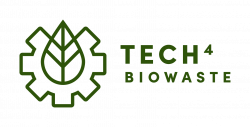Lactic acid fermentation
Jump to navigation
Jump to search
| Technology | |

| |
| Technology details | |
| Name: | |
| Category: | |
| Feedstock: | Sugar, 2nd generation sugar, glycerol, synthesis gas, carbon dioxide |
| Product: | Lactic acid, Lactide, PLA |
Lactic acid fermentation is a fermentation technology that converts fermentable substrates to lactic acid. It is based on a metabolic process by cells in which glucose or other fermentable sugars are converted into cellular energy and lactate, which is lactic acid in solution. This anaerobic fermentation reaction occurs in some bacteria, mainly Lactobacillales, and animal cells, such as muscle cells. For industrial processes lactic acid fermentation is used to produce lactic acid, lactides and biopolymers (polylactic acid, PLA).
Feedstock
- glucose, starch hydrolysates, sugar mixtures, 2nd generation sugar
- glycerol, plant oil
- carbon dioxide
Process description
- Primary objective
- Working principle
- Homofermentative bacteria convert glucose to two molecules of lactate and use this reaction to perform substrate-level phosphorylation to make two molecules of ATP:
- glucose + 2 ADP + 2 Pi → 2 lactate + 2 ATP
- Heterofermentative bacteria produce less lactate and less ATP, but produce several other end products (Examples include Leuconostoc mesenteroides, Lactobacillus bifermentous, and Leconostoc lactis):
- glucose + ADP + Pi → lactate + ethanol + CO2 + ATP
- Bifidobacterium bifidum utilizes a lactic acid fermentation pathway that produces more ATP than either homolactic fermentation or heterolactic fermentation:
- 2 glucose + 5 ADP + 5 Pi → 3 acetate + 2 lactate + 5 ATP
- Important process parameters
- Important product parameters
Products
- lactic acid, lactide, polylactic acid (PLA)
Implementation
- Maturity
- The maturity of the technology depends mainly on the feedstock that should be used. For starch hydrolysates, glucose and sugar fermentation the process it is a mature commercially running on a multi ton scale (NatureWorks, Corbion).
- For glycerol fermentation and for gas fermentation it should be at a TRL level of 5 to 6.
- Modularity /Implementation
- Consumer acceptance
- No issues expected.
- Legal aspects
- No issues expected.
- Environmental aspects
- Lorem ipsum
Technology providers
- Corbion
- NatureWorks
- Futerro / Galactic
- ...
